Counting buffalo and observing a wild dog hunt
Day 6 - Admin day
Despite the storms and the gale force winds, storms which brought little rain to this drought ridden region, the temperature this morning was still warm. For once we didn’t need hats and fleeces. Paweł scanned for the dogs and we headed south-east, back to Bayala corner; the dog’s favourite place. They’d already left when we arrived. We got a brief visual on the fence line before they headed inland, taking a route tricky to follow. Tourists reported seeing them, but for us they stayed out of sight. Still, that’s 8 out of 8 dog sessions with visuals, not bad.
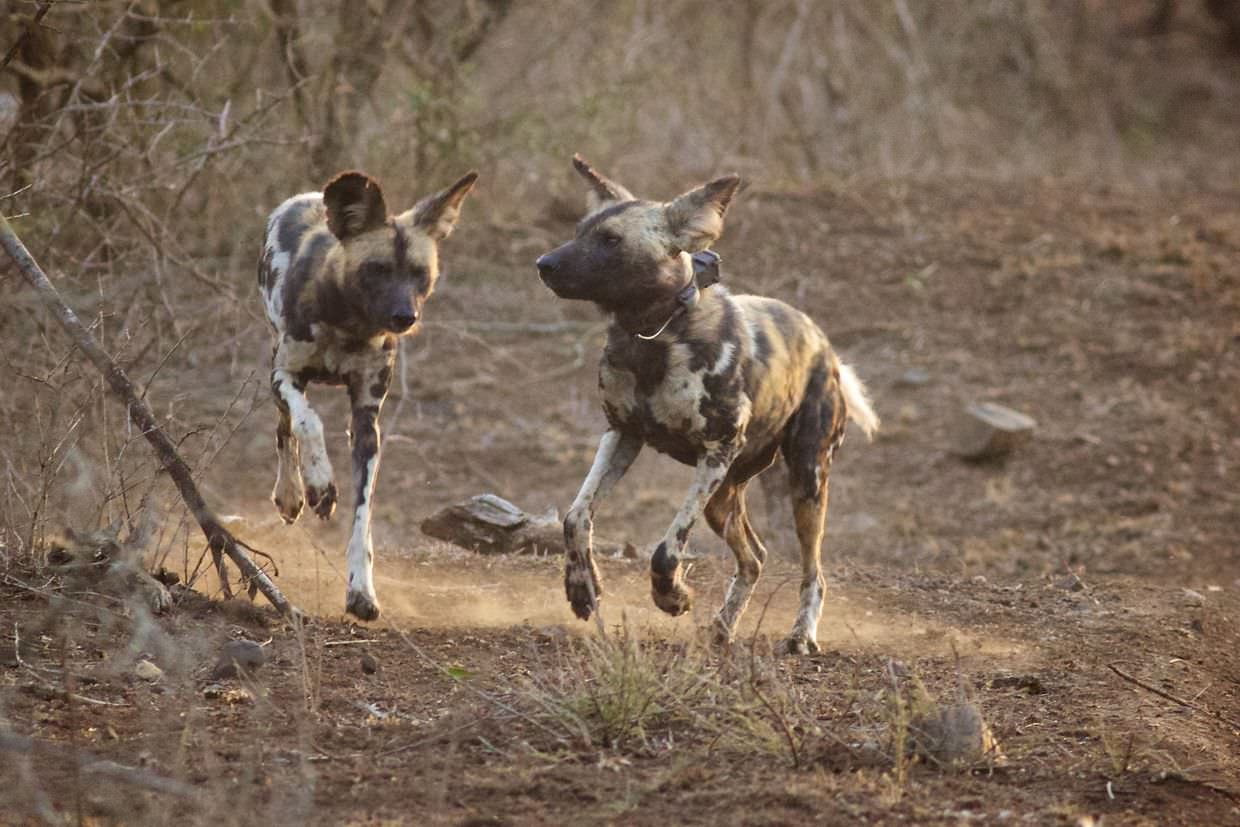
Post coffee and muesli rusks, we headed further south, deep into Bayete, to the dry riverbed, in search of a camera trap. This part of the park remains verdant; the trees are green and plants grow beneath them. It’s a leopard hotspot and our eyes scanned the trees as we travelled. In week 7 of 8 I am still yet to see one of these elusive cats. “57 images, yes!”, Dani shouted while she’s changing the trap, we’re all keeping an eye out for opportunist leopards and nearby lions (the photos however were all of impala and nyala).
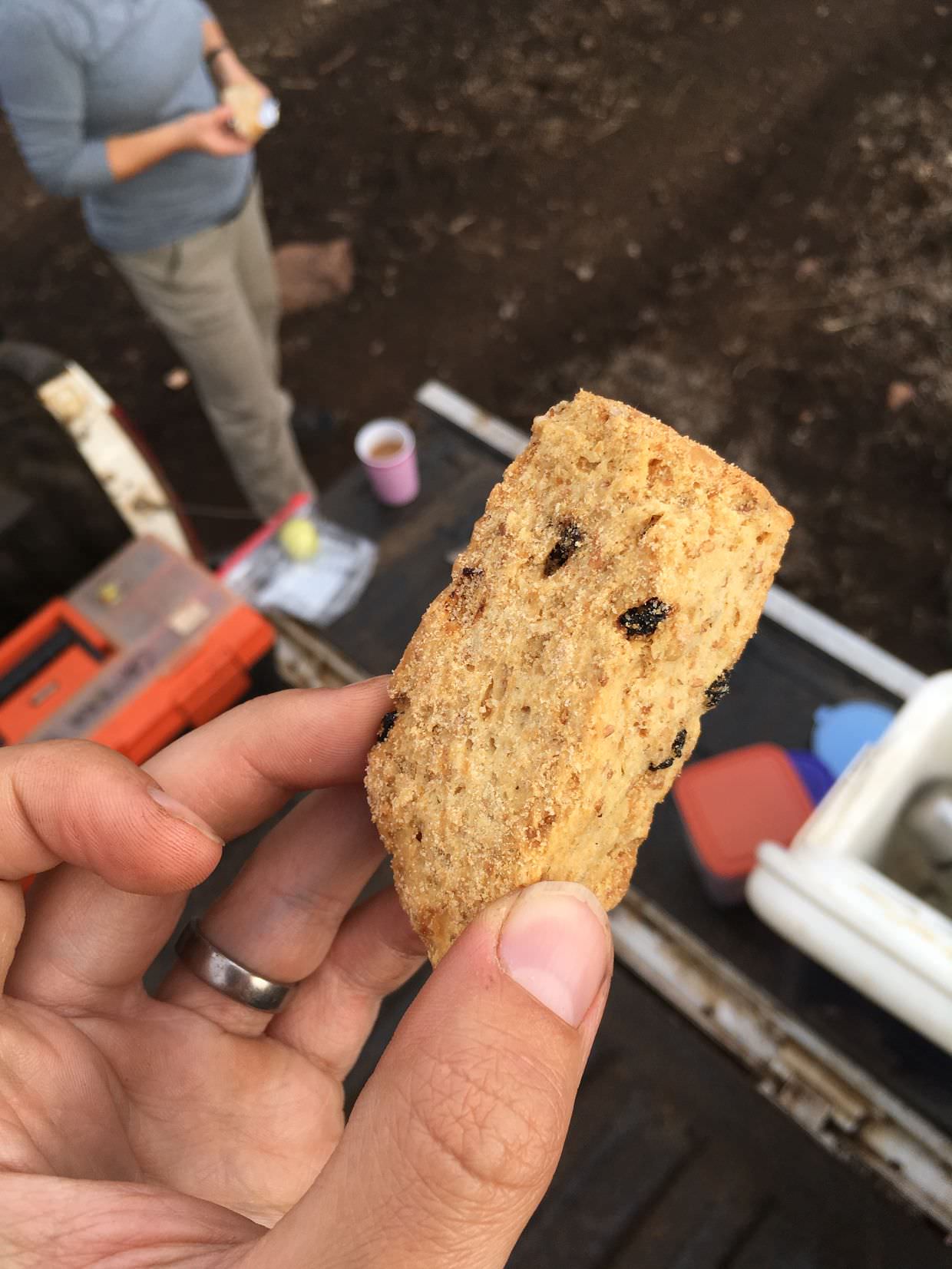
ZRR has admin days meaning no evening session tonight. This gave my back and leg spasms a welcomed break. All this truck riding, spine bashing, arm bruising travel 8 hours a day has taken its toll.
Day 7 - Counting buffalo and a wild dog hunt
A later start this morning, 5:30am; which turned out to be 6am after we manually filled up the truck with diesel. Today we’d be doing the unenviable and difficult task of monitoring buffalo herds at feeding sites. The buffalo are suffering in the drought, many are losing weight, many are dying. Our aim was to count the buffalo feeding, sex and age them, and assess their condition.
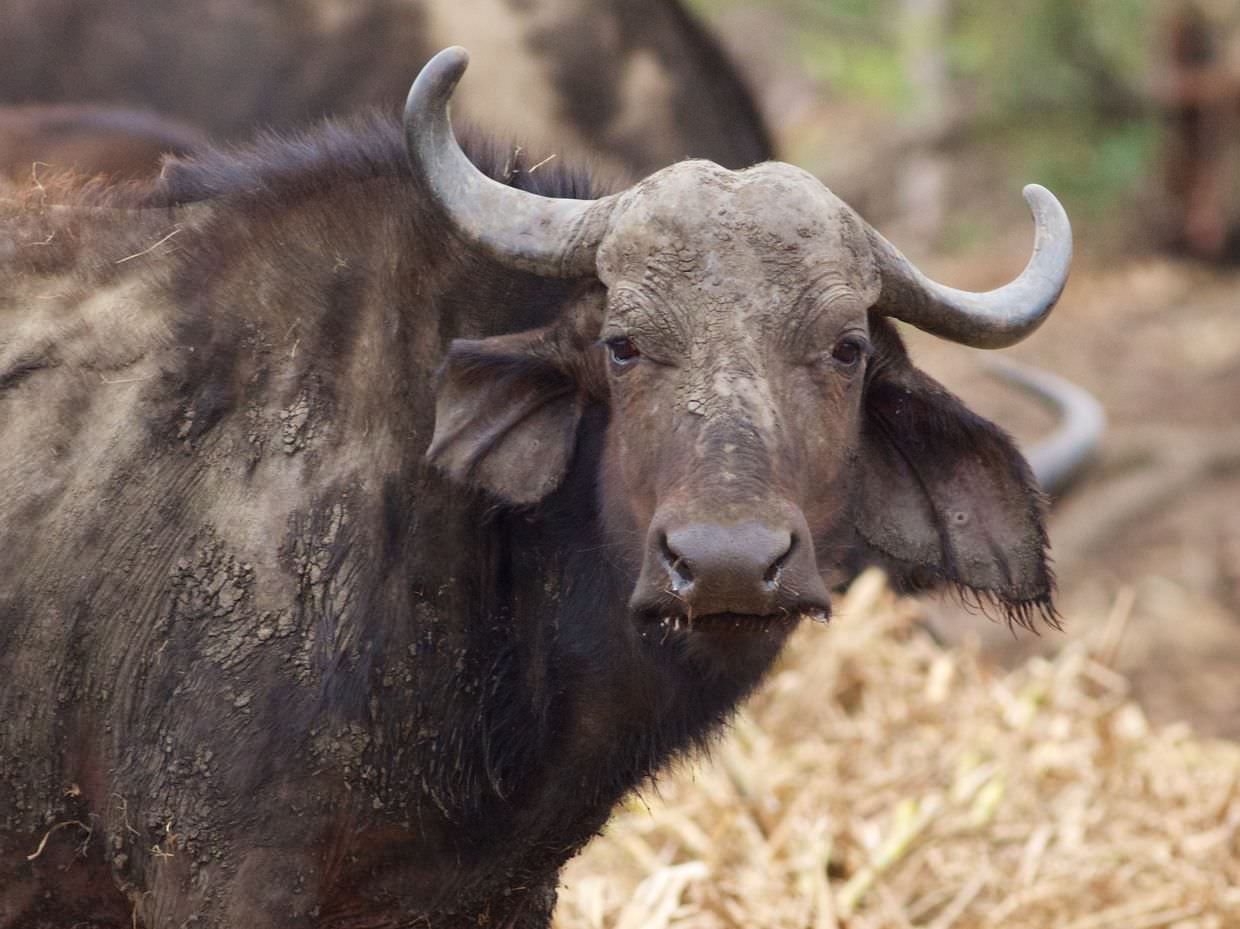
To sex and age a buffalo it all comes down to the horns; are they curved, do they hang, is there a big “boss” on top? To be honest, we found it difficult enough just counting them; first there were 17, then 24, then 27; when they left we got a final correct total of 30. Our estimates of sub adults and juveniles, males and females, will have a big margin of error.
At the site there were wildebeest too, to add to the confusion of brown bodies. So too were many warthog, crested and helmeted guinea-fowl, black-capped bulbuls, golden breasted buntings, and skittish vervet monkeys – all clearly wary of our white truck.
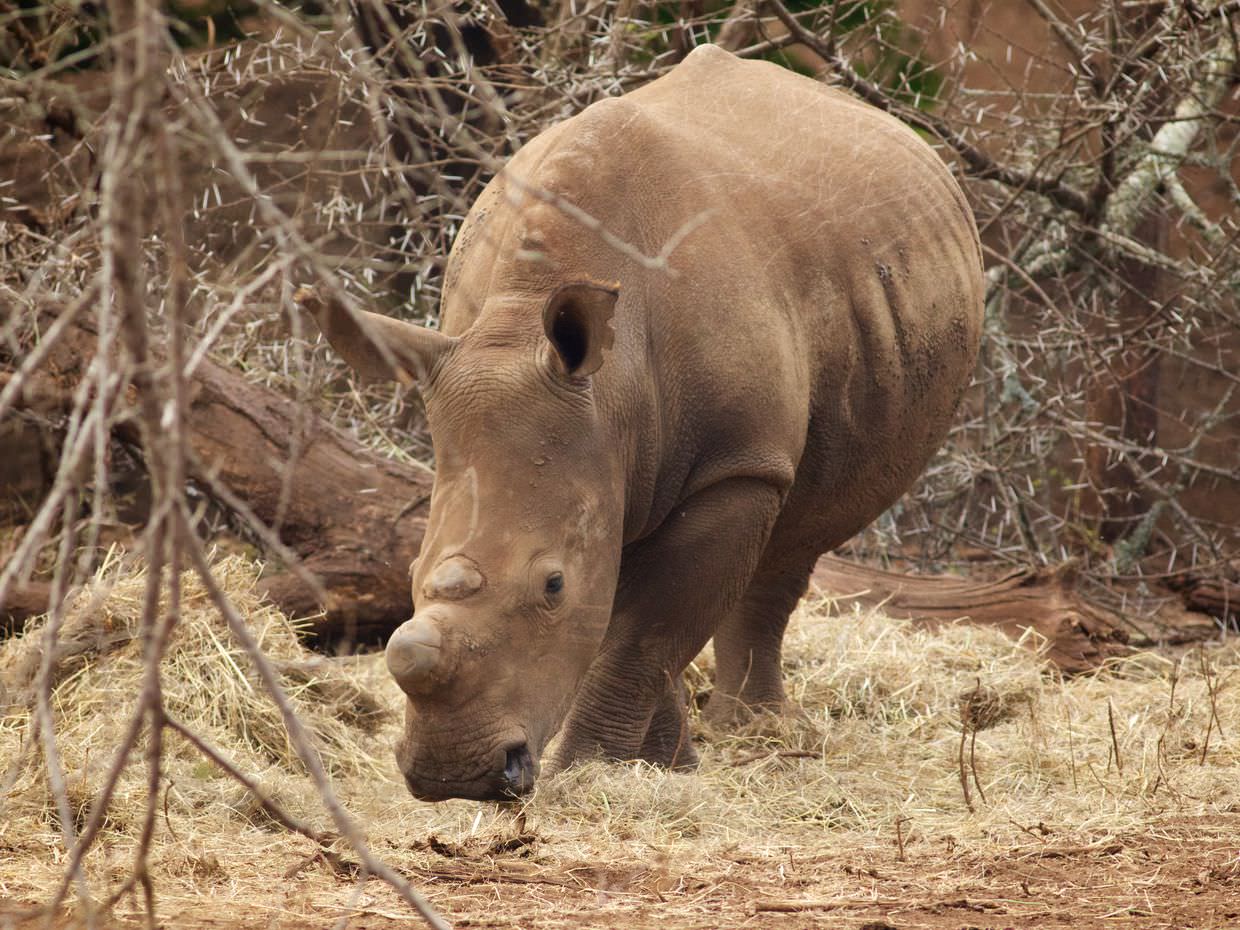
The herbivores are being fed sugar cane, which the buffalo calmly munched, their jaws moving sideways, masticating the tasty dish. Many of the workers we’ve seen putting out the cane also chew it. I’d like to try some. After eating the buffalo collapsed onto their side for a massage; oxpeckers and warthogs went to work, chewing off the ticks, and whatever other nutritious bits they could find. The buffalo seemed to enjoy it.
We stayed at the site for a couple of hours, and the star of the show was a little black-backed jackal. The first jackal I’ve seen, it zipped about the yellow straw, nibbling at bits, threatening warthog, bravely chasing impala, scaring off monkeys, hunting birds, and finally settling down in the food to have a good roll around.
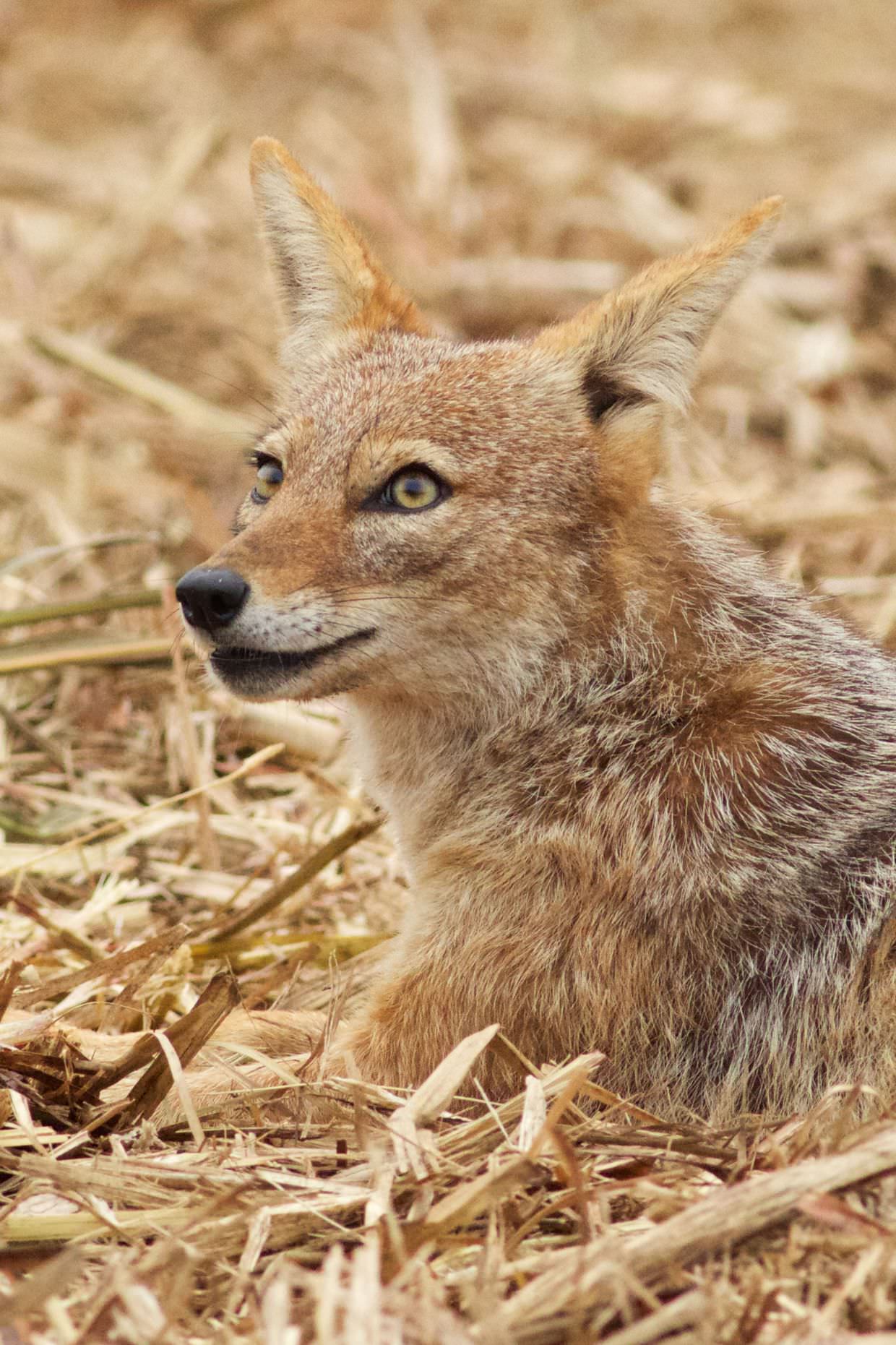
Dani got reports that two female cheetah had been spotted nearby. They’re yearlings who’ve recently left their mother and our ID kit needs better pictures. After coffee and rusks we went in search, driving up and down the roads in the general area they were last seen – there’s no collars, which makes things difficult. Rather smuggly I was first to spot them, two cheetah lying in the dirt, resting. The cheetah didn’t do much more than that. They looked up occasionally, twisted a little, but didn’t stand for us to get ID photos. We had to leave them to drop off Babs and Sylvia in town, they were going to St Lucia.
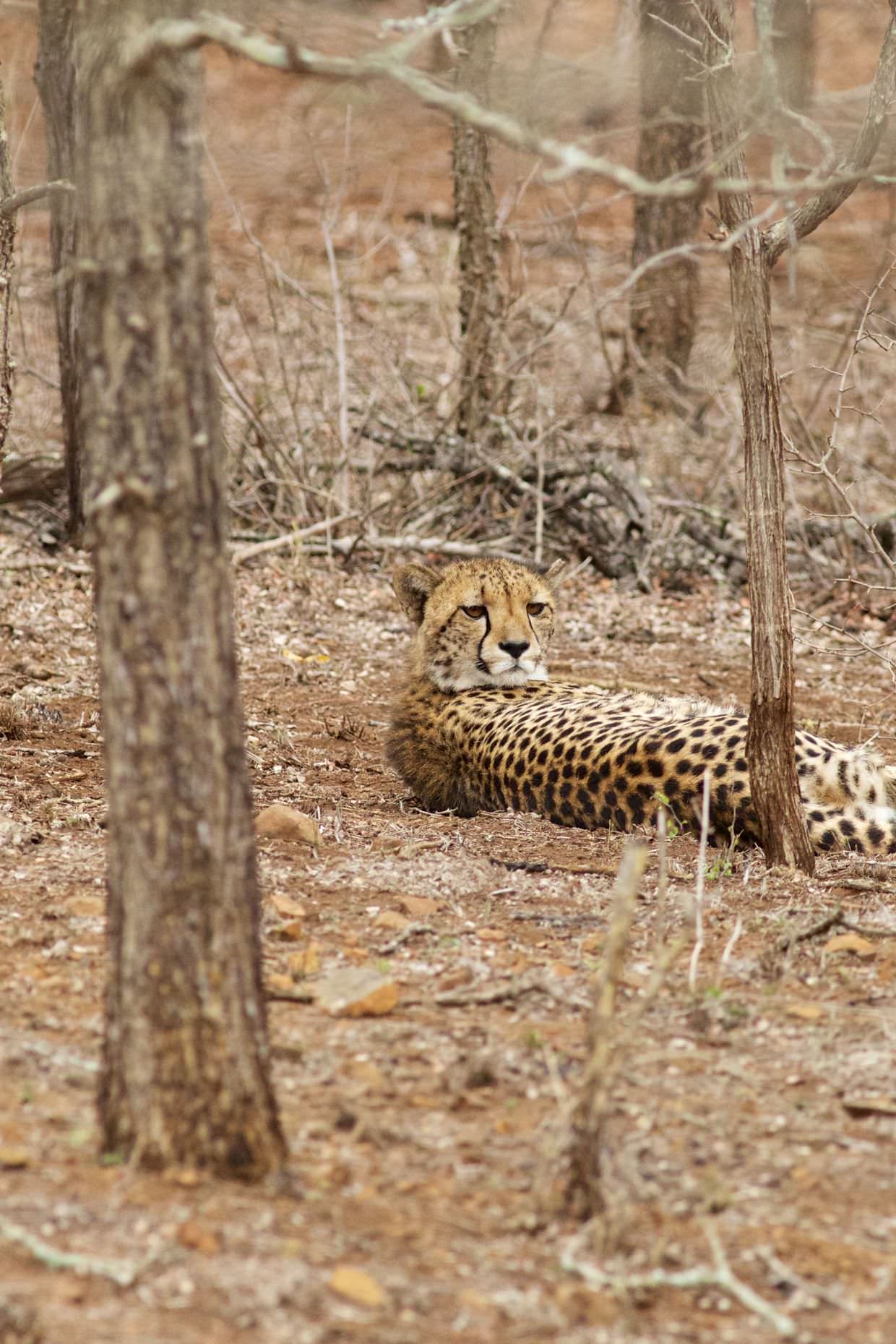
Hunting by the fence
With Sylvia and Babs now in St Lucia, the three of us, Pawel, Dani and me, headed out in search of the dogs. The drive started well, a single scan gave us a good location, and on the way we passed elephant, rhino and buffalo. One particular white rhino stood square in the road, not wanting to budge – we edged closer and it stood its ground, we waited patiently.
Finding the dogs got easier too, a tour guide radio’d in their exact location and we headed straight there; they’d travelled along the fence line, from Bayala corner down to Bayete. From the dirt track we could see the gathering of safari jeeps.
The dogs were pacing up and down the fence looking for an unsuspecting impala; F2 lagging behind doing her own thing, as usual, she’s so weird. Perhaps she wants to disperse, but without any other dogs nearby what can she do? The troubles of small fenced reserves.
The dogs caught sight of an impala herd and ran off hunting them, we hugged the fence line and slowly followed until we reached a corner. Here were two male impala, they hadn’t fled when the dogs gave chase, and while the dogs weren’t in sight, these impala were dicing with death, “they’re screwed” I said. The dogs could easily surround them and force them into the electrics.
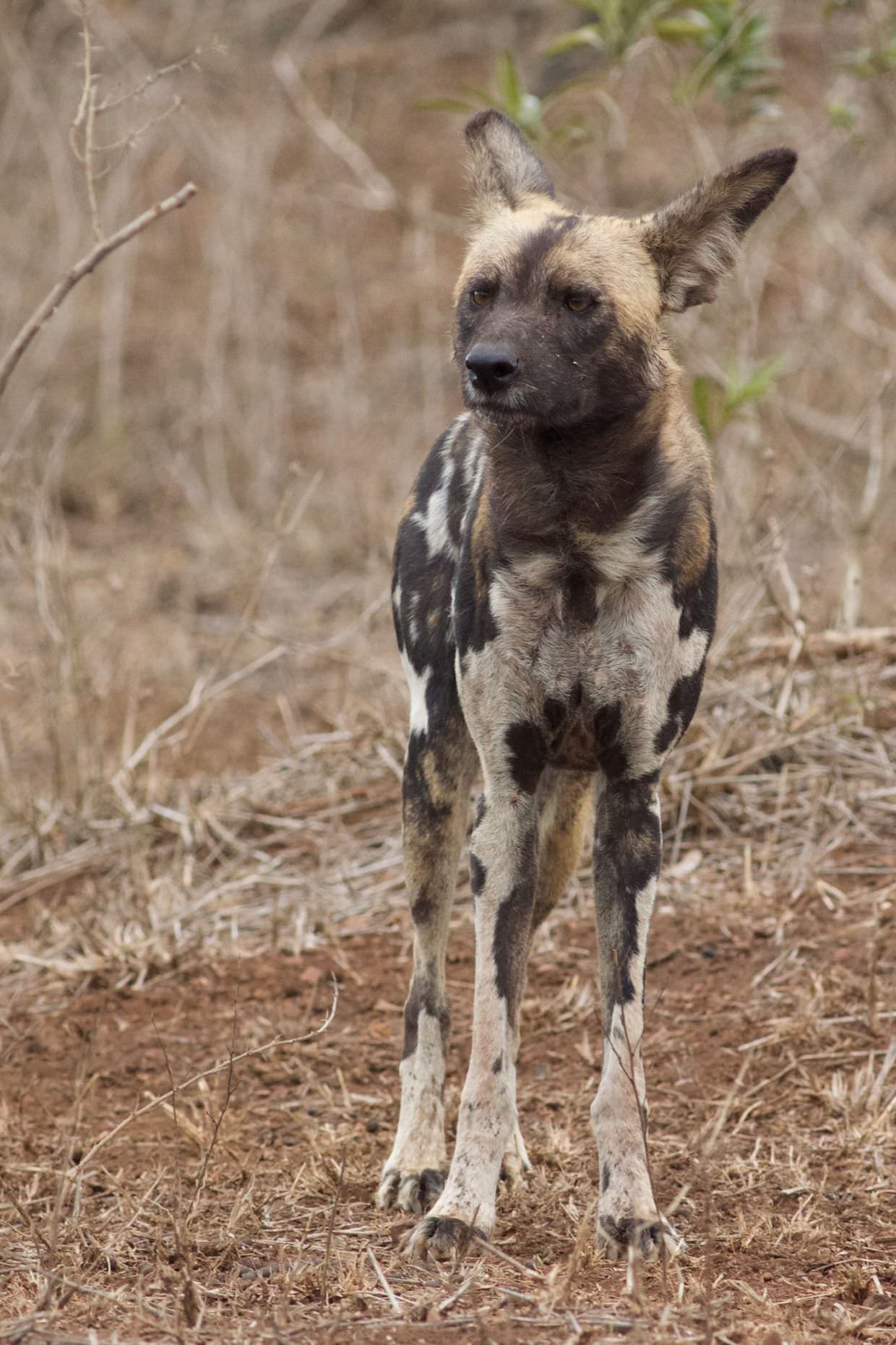
Sure enough we spotted the pack coming back up the hill, their herd chase had been fruitless and they were resuming fence patrols. The impala watched, but didn’t flee. A dog sees one and starts running, a single impala heads along the fenceline and down the hill, out to safety. The dog doubles back and now the rest of the pack are here too – the lone last impala turns to run, an impulse, but it’s got nowhere to go, it’s in a corner. It takes a leap of madness and launches itself directly into the fence in a desperate attempt to escape, its horns get caught and we hear the familiar zzzap noise – it’s being electrocuted, its body jolts. Wriggling and writhing it breaks free, leaping away from the dogs, it runs by the back of the truck and down the hill. The whole pack sprints behind it, gaining on it with each impala jump. Just over the hill, just out of sight, but in front of tourists, they make the kill. We arrive to the sounds of tourists chatting loudly about how amazing that was, below us in a drainage area the dogs are almost done eating.
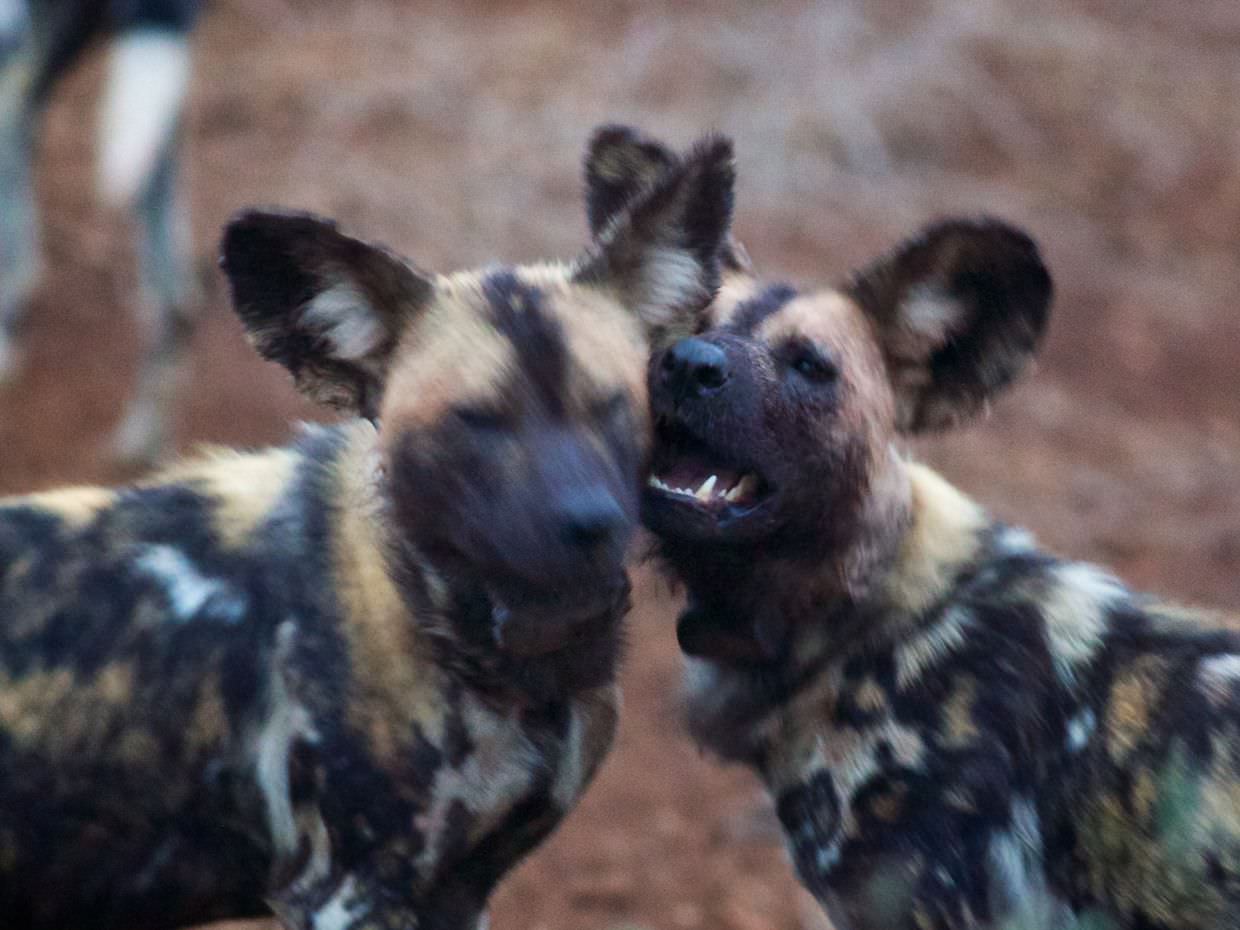
Day 8 - Day of the dead
Our 11th dog session was much like those before it. We headed south, got a signal, followed the signal and found the pack of 5 sitting on the fence line. Their patterns were becoming predictable. We arrived too late for their morning hunt, presumably they’d already eaten – that or they simply weren’t hungry. F2 was being her weird self again, while the pack rested she paced up and down the fence, looking out across the road to Thanda reserve; we couldn’t see what interested her – some nyala, a kill, perhaps some vagrant wild dogs? Who knows? Her behaviour is so odd.
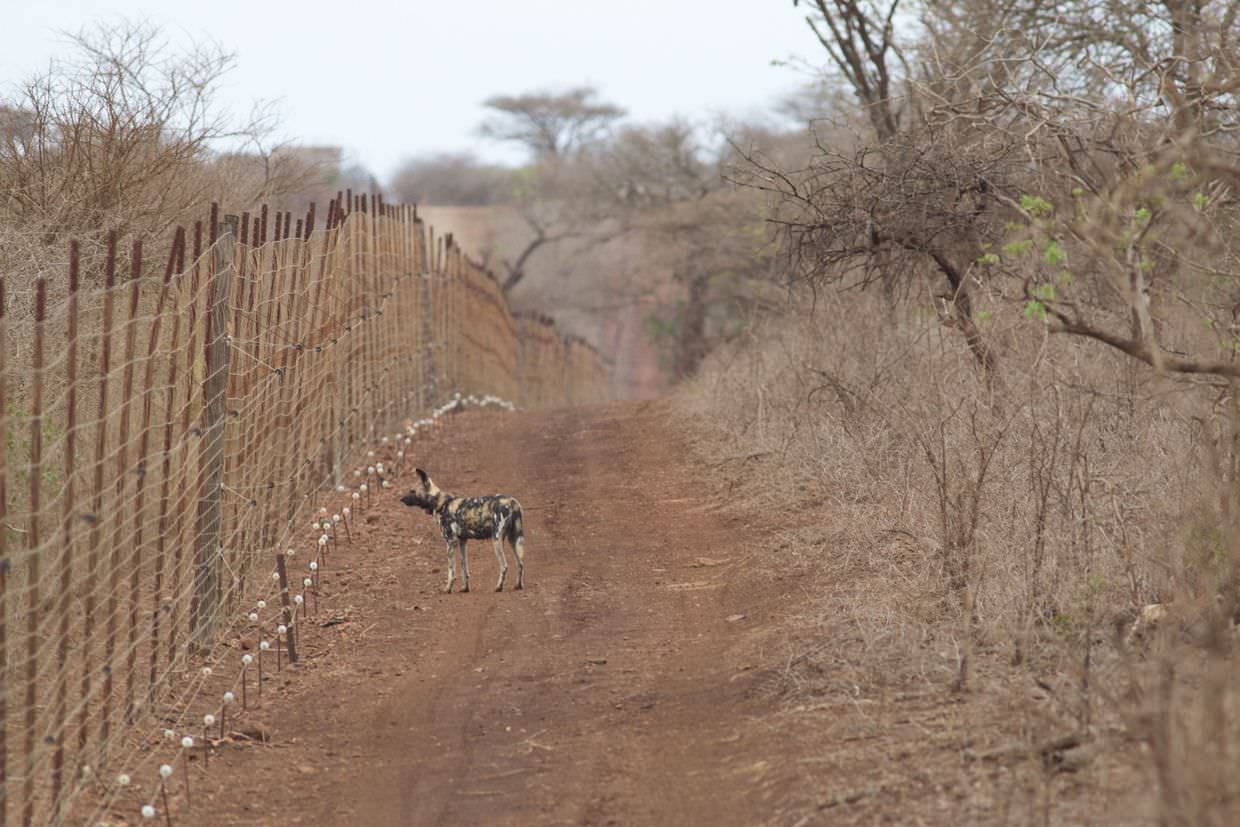
A dead impala lay on the roadside, it’d died from exhaustion overnight – the dogs sniffed at it, they nibbled at its groin (taking the gonads), but let it be. We needed to continue our wild dog habituation by doing another baiting; we could use this impala. After coffee, rusks, and once all the safari jeeps were gone, Dani dragged it by the legs to the truck, we took the scrawny male home with us, along with the copious little black ticks that called him home.
We had an eye, or a nose, for spotting dead animals today. This dead impala, shortly followed by a dead zebra – partly eaten by vultures; a dead warthog on the roadside; vultures chewed a leg of nyala; wildebeest and buffalo skeletons amidst the thicket; a poor grey duiker dead too. This is Africa. This is what drought looks like. Scrawny, exhausted, dry, brown, desolate and dead. ZRR needs rain desperately.
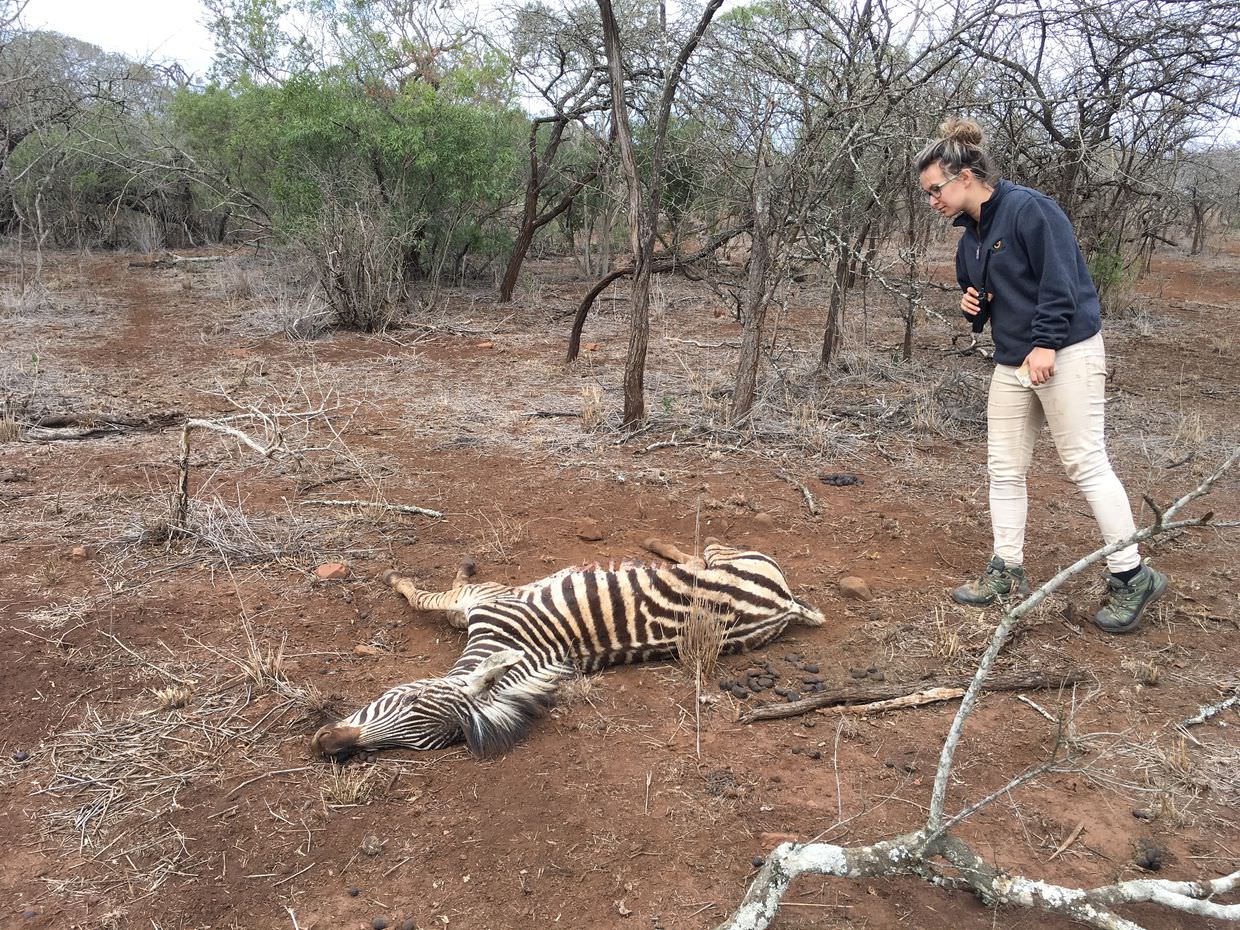
In the afternoon, ticks now all over the truck, a stream of clear impala juice running under the seats, we set off with our impala to bait the dogs. We arrived in good time, they were resting where we’d left them. Dane met us there. Once the dogs had woken, stretched and set off on their patrol, we got to work. Dane cut off a leg, tied rope to it, and we dragged it behind, spreading the impala scent as we drove. Upwind from them we tied the carcass to a tree and drove away to watch what would happen. The aim is to get as close as possible while they feed.
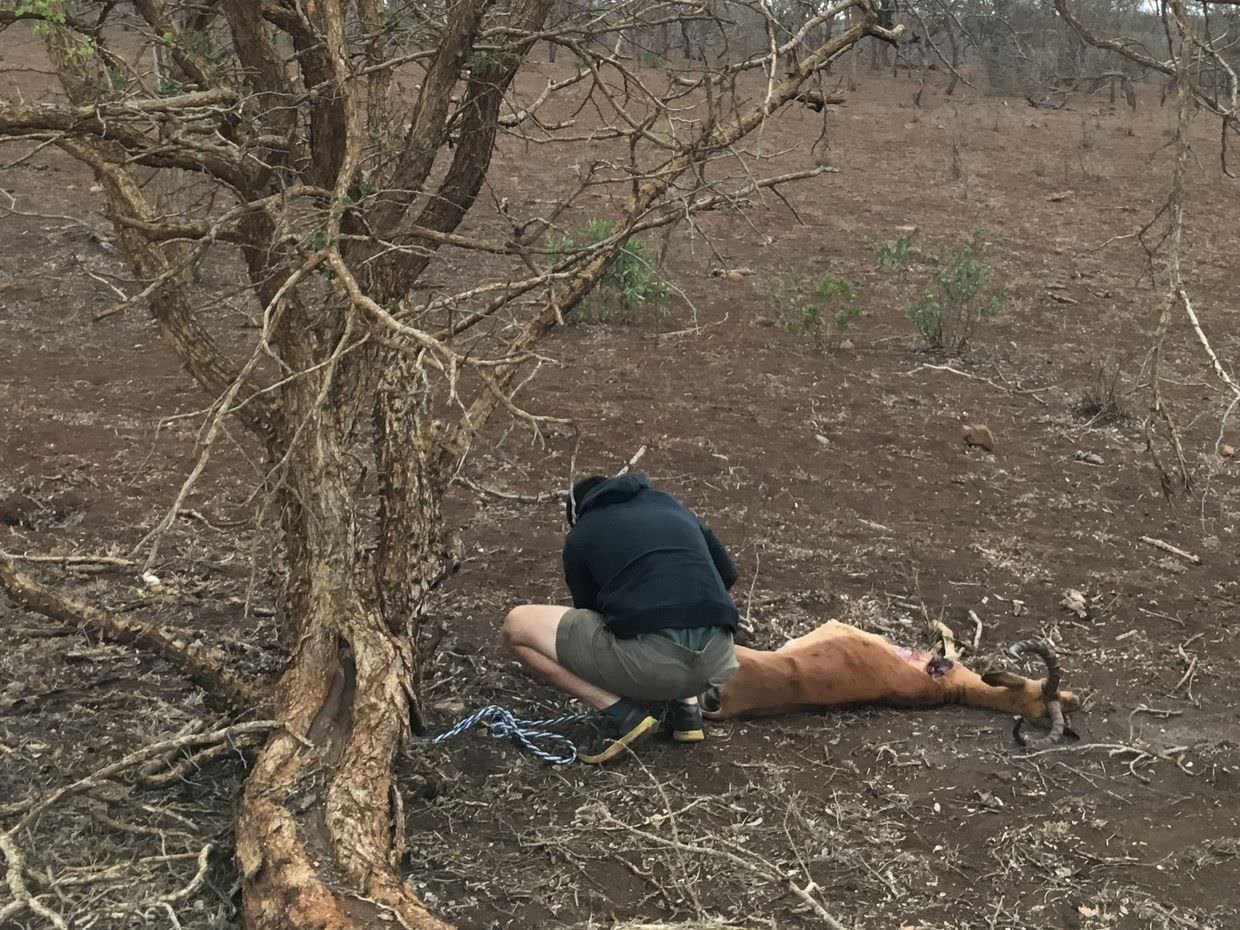
It wasn’t the most successful bait; after a few minutes they found it, they nibbled, they tasted, and then they left – all before we could respond. Only F2 stayed by the carcass, she seemed content to eat it. The others wandered out of sight, presumably hunting. We left them and the carcass and called it a night.
We saw rhino, buffalo, elephant, 6 ostrich and our first hippos on the drive home.